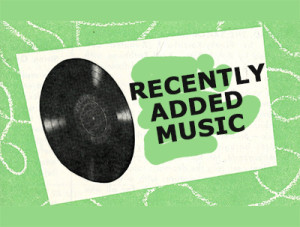Timeless Love Songs of the 1920s
![]() If there’s one type of song that we will never grow tired of, it is the ever popular love song. Mellow or upbeat, mushy or filled with angst; whatever the tempo or the lyrical content…Enjoy these nine timeless love songs from the 1920s found in the Recorded Sound Archives Vintage, Judaic and Jazz collections just in time for Valentines day.
If there’s one type of song that we will never grow tired of, it is the ever popular love song. Mellow or upbeat, mushy or filled with angst; whatever the tempo or the lyrical content…Enjoy these nine timeless love songs from the 1920s found in the Recorded Sound Archives Vintage, Judaic and Jazz collections just in time for Valentines day.
Nine Timeless Love Songs of the 1920s
- Ain’t Misbehavin’ by Fats Waller written in 1929 by Thomas “Fats” Waller himself, Harry Brooks and Andy Razaf.
- All Alone by Al Jolson, written by Irving Berlin and published in 1924.
- April Showers by Al Jolson, written by B.G. DeSylva music composed by Louis Silvers originally published in 1921.
- Blue Skies by The Hour of Charm Girl Orchestra and Choir, written and composed by Irving Berlin in 1926.
- I Can’t Believe That You’re In Love With Me by Artie Shaw, written by Jimmy McHugh and Clarence Gaskill in 1926.
- With a Song in My Heart by Dennis Day, originally written for the musical Spring is Here by Lorenz Hart and Richard Rodgers in 1929.
- What’ll I Do? by Henry Burr and Marcia Freer, written by Irving Berlin in 1923.
- Who’s Sorry Now? by Ernest Stevens, written by Bert Kalmer and Harry Ruby composed by Ted Snyder this song was published in 1923 and featured in the 1950 film, Three Little Words.
- Everybody Loves My Baby (But My Baby Don’t Love Nobody but Me) by Aileen Stanley, composed by Jack Palmer and Spencer Williams in 1924.
Some songs may only be available as snippets due to US Copyright laws.
 Did you know the
Did you know the 